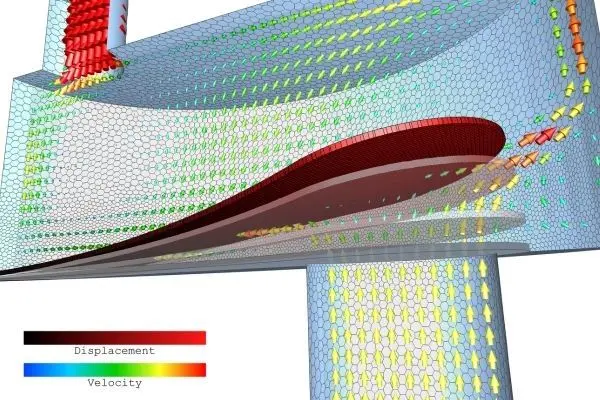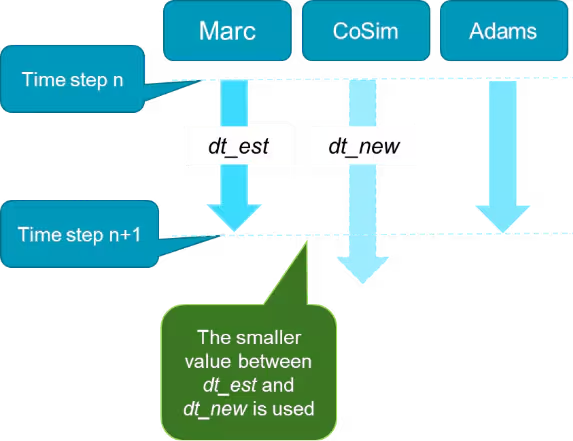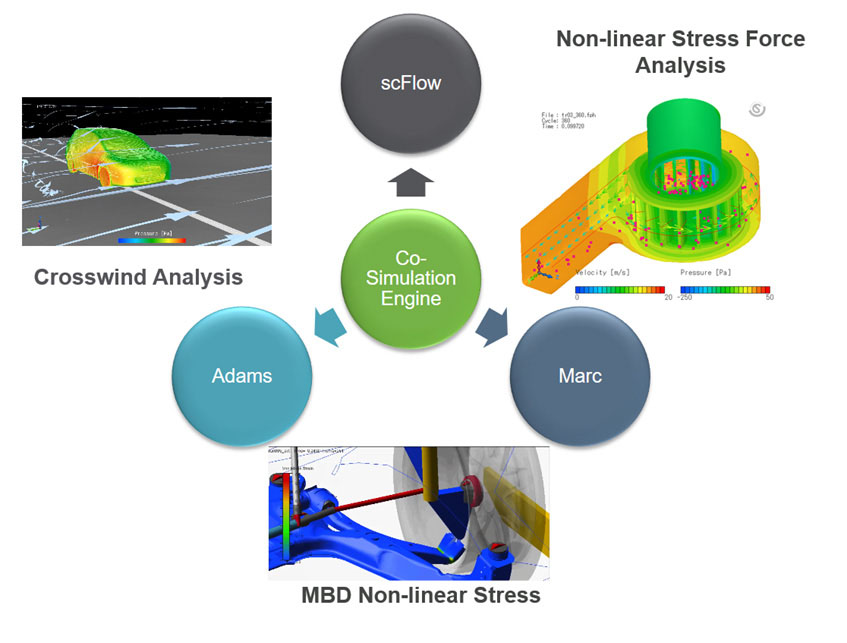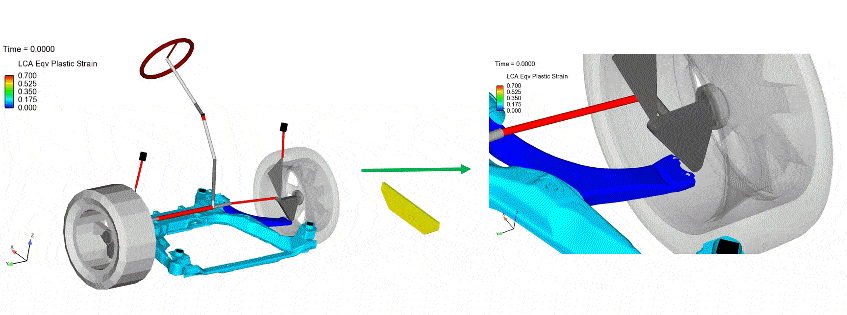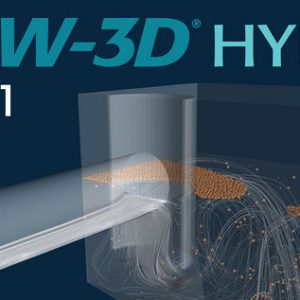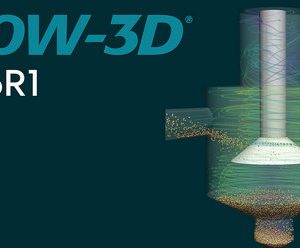MSC CoSim 2025.1
$ 170.00
MSC CoSim 2025.1 – Advanced Multiphysics Co-Simulation Platform
MSC CoSim 2025.1 is a cutting-edge co-simulation software from Hexagon that enables seamless coupling between multiple CAE solvers for accurate multiphysics analysis. With powerful integration of CFD, FEA, and motion dynamics, CoSim 2025.1 delivers precise simulation of real-world engineering systems. Ideal for aerospace, automotive, and industrial applications, this release offers improved solver performance, enhanced co-simulation stability, and extended support for MSC Nastran, Adams, and Cradle CFD.
Features:
-
Unified co-simulation framework for FEA, CFD, and MBD
-
Enhanced solver interoperability and scalability
-
Support for MSC Nastran, Adams, and Cradle CFD
-
Streamlined GUI and automated workflow setup
-
Improved accuracy for fluid-structure and thermal-mechanical coupling
Perfect for: Engineers, researchers, and simulation professionals looking for high-fidelity multiphysics modeling and faster product design validation.
Description
MSC CoSim 2025.1 – The Next Generation of Multiphysics Co-Simulation Software
Overview
MSC CoSim 2025.1 is Hexagon’s latest and most advanced co-simulation platform for seamless multiphysics engineering. Designed to synchronize the performance of world-class CAE solvers like MSC Nastran, Adams, Marc, and Cradle CFD (scFLOW), CoSim 2025.1 provides a unified environment for simulating the complex real-world interaction between structural, thermal, and fluid domains.
With every new release, Hexagon continues to enhance solver integration, computational efficiency, and simulation fidelity — and MSC CoSim 2025.1 marks a major step forward. Engineers can now achieve faster convergence, reduced computational cost, and a smoother setup process thanks to a smarter coupling engine and redesigned user interface.
New Functions and Key Enhancements
1. Enhanced Adams–Marc Coupling Stability
The CoSim 2025.1 update introduces support for the “estimated time increment” (dt_est) output from MSC Marc. The engine now automatically compares this value with the internally computed dt_new and uses the smaller increment during coupled simulations.
✅ Benefit: Fewer solver cut-backs, improved time-step stability, and higher accuracy in highly non-linear mechanical simulations — such as flexible body dynamics and crash or contact problems.
2. Refined Marc–scFLOW and Nastran–scFLOW Co-Simulation
In this release, users gain a “minimum CoSim iteration loop” parameter within the CoSim Condition Wizard. This ensures that a minimum number of co-simulation exchanges occur during each step, even when convergence is achieved early.
✅ Benefit: Prevents premature loop termination, ensuring more stable and accurate results in fluid-structure interaction (FSI) and thermal coupling workflows.
3. New scFLOW Command Specification
MSC CoSim 2025.1 supports the “COSIM” command specification for coupling with scFLOW, available in Cradle CFD 2025.1.
✅ Enhancements include:
-
Full support for thermal co-simulation (solid–fluid heat transfer).
-
Advanced options for 6-DOF body motion and restart simulations.
-
Improved numerical control for coupled solver synchronization.
This update allows engineers to define coupling interfaces directly within scFLOW, simplifying setup and minimizing human error.
4. Graphical User Interface and Workflow Automation
The new GUI layout introduces:
-
A cleaner, modernized interface for setting up multi-solver projects.
-
Context-aware configuration panels for solver pairings.
-
Automatic detection of compatible solver versions.
-
Real-time feedback for unit mismatches and time-step consistency.
✅ Benefit: Significantly faster setup, fewer manual edits, and reduced startup errors for complex multiphysics projects.
5. Improved Accuracy and Performance
MSC CoSim 2025.1 optimizes the internal coupling algorithm, allowing tighter synchronization and more efficient time-integration across solvers.
Benchmarks show improved convergence speed in FEA-CFD coupled runs, with simulation times reduced by up to 20% in large industrial models (results vary depending on case size).
Bug Fixes and Performance Refinements
The 2025.1 update includes numerous bug fixes and refinements drawn from extensive user feedback and testing:
-
Fixed GUI crash when switching between “old” and “new” command specifications in scFLOW environments.
-
Corrected file-path parsing issues when using long directory names under Windows 10/11.
-
Resolved inconsistencies in the handling of thermal coupling coefficients in Nastran–scFLOW projects.
-
Optimized log file generation to improve clarity and reduce disk usage.
-
Addressed rare convergence stalls in high-damping Adams–Marc models.
-
General solver handshake improvements for stability across distributed computing systems.
These under-the-hood changes make CoSim 2025.1 more stable, faster, and more predictable for daily engineering use.
 System Requirements
System Requirements
Supported Operating Systems
-
Windows 10 64-bit (x86_64)
-
Windows 11 64-bit (x86_64)
-
Red Hat Enterprise Linux 8.x / 9.x
-
SUSE Linux Enterprise 15.x
(Refer to the official installation guide for the latest compatibility updates.)
Recommended Hardware
-
Processor: Multi-core 64-bit CPU (Intel i7 / Xeon / AMD Ryzen 7 or higher)
-
Memory: Minimum 16 GB RAM; 32 GB or more recommended for large coupled simulations
-
Disk Space: 10 GB free for installation; 50–200 GB for project storage and logs
-
Graphics: OpenGL-compatible GPU recommended for 3D visualization
-
Network: High-speed Ethernet for distributed co-simulation environments
Software Dependencies
-
MSC Nastran 2025, MSC Adams 2025, MSC Marc 2025, Cradle CFD 2025.1 (scFLOW)
-
Supported compilers and libraries as listed in the official Hexagon documentation
-
Valid Hexagon License Manager installation with CoSim license features enabled
Highlights and Competitive Advantages
-
Unified platform for multiphysics and multi-solver co-simulation.
-
Direct integration with Hexagon’s MSC CAE portfolio.
-
Reduced coupling time steps for greater numerical stability.
-
Thermal and structural FSI support out of the box.
-
Enhanced workflow automation through the CoSim Condition Wizard.
-
Cross-platform compatibility for both Windows and Linux environments.
-
Improved convergence tracking and diagnostic output.
-
Backward compatibility with CoSim 2024 and earlier projects.
Interesting Facts & Industry Insights
-
Used by global innovators: Major automotive, aerospace, and energy companies rely on MSC CoSim for digital twin creation and early-stage product validation.
-
Bridging the physics gap: Traditional FEA or CFD tools alone can’t capture cross-domain interactions. CoSim bridges that gap, synchronizing physics for highly accurate real-world predictions.
-
Digital engineering acceleration: With CoSim 2025.1, engineers can run coupled analyses faster, optimize designs early, and minimize costly prototype iterations.
-
Powered by Hexagon: As part of the Hexagon CAE ecosystem, CoSim integrates seamlessly with other solutions like Digimat, Actran, and SimManager, forming a complete digital engineering workflow.
-
Sustainability impact: By reducing the need for physical testing, CoSim contributes to lower energy usage and smaller carbon footprints in the product development cycle.
 Conclusion
Conclusion
MSC CoSim 2025.1 sets a new benchmark for multiphysics co-simulation by combining accuracy, performance, and user experience into one powerful package. Whether you’re simulating structural deformation under fluid forces, thermal stress in electronics, or motion-induced turbulence in mechanical systems, CoSim 2025.1 delivers unmatched precision and control.
Upgrade now to leverage the next-generation coupling engine, enjoy improved solver stability, and experience the future of integrated simulation.
⭐️⭐️⭐️⭐️⭐️
Outstanding Co-Simulation Platform for Multiphysics Engineering – MSC CoSim 2025.1 ReviewAs a simulation engineer who’s been using MSC CoSim for several product development cycles, I can confidently say that MSC CoSim 2025.1 is a major leap forward in multiphysics co-simulation technology. The improvements in solver coupling, performance, and workflow automation have made my daily engineering work significantly faster and more reliable.
The new Adams–Marc coupling enhancements deliver excellent stability — the automatic time-increment control drastically reduces cut-backs in non-linear cases. The addition of the minimum iteration loop for Nastran–scFLOW and Marc–scFLOW co-simulation has also improved convergence for our fluid-structure interaction (FSI) projects.
Another highlight is the new scFLOW command specification. It simplifies the setup process for thermal and motion coupling, and it’s fully compatible with Cradle CFD 2025.1, which makes integration seamless. The updated GUI is more intuitive, with better feedback messages and a smoother condition-wizard workflow.
In practical terms, MSC CoSim 2025.1 has allowed our team to run coupled analyses (FEA + CFD + MBD) faster, with fewer errors and better numerical consistency. It saves considerable time during design validation and helps us predict real-world performance earlier in the development cycle.
Overall, this release shows Hexagon’s commitment to refining solver interoperability and delivering tools that empower engineers. For anyone working in CAE, multiphysics simulation, or fluid-structure interaction, MSC CoSim 2025.1 is a must-have upgrade.
✅ Highly recommended for professional simulation engineers, developers, and R&D teams.
⭐️⭐️⭐️⭐️⭐️




